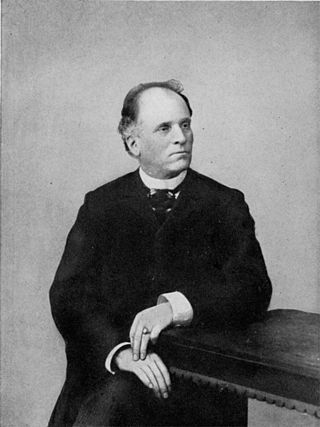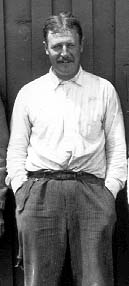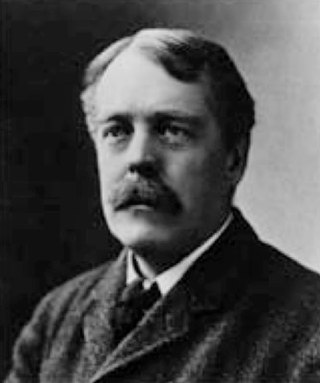
Francisco Vázquez de Coronado was a Spanish conquistador and explorer who led a large expedition from what is now Mexico to present-day Kansas through parts of the southwestern United States between 1540 and 1542. Vázquez de Coronado had hoped to reach the Cities of Cíbola, often referred to now as the mythical Seven Cities of Gold. His expedition marked the first European sightings of the Grand Canyon and the Colorado River, among other landmarks. His name is often Anglicized as Vasquez de Coronado or just Coronado.

Adolph Francis Alphonse Bandelier was a Swiss-born American archaeologist who particularly explored the indigenous cultures of the American Southwest, Mexico, and South America. He immigrated to the United States with his family as a youth and made his life there, abandoning the family business to study in the new fields of archeology and ethnology.

The Zuni are Native American Pueblo peoples native to the Zuni River valley. The Zuni are a Federally recognized tribe and most live in the Pueblo of Zuni on the Zuni River, a tributary of the Little Colorado River, in western New Mexico, United States. The Pueblo of Zuni is 55 km (34 mi) south of Gallup, New Mexico. The Zuni tribe lived in multi level adobe houses. In addition to the reservation, the tribe owns trust lands in Catron County, New Mexico, and Apache County, Arizona. The Zuni call their homeland Halona Idiwan’a or Middle Place. The word Zuni is believed to derive from the Western Keres language (Acoma) word sɨ̂‧ni, or a cognate thereof.

Hohokam was a culture in the North American Southwest in what is now part of Arizona, United States, and Sonora, Mexico. It existed between 300 and 1500 AD, with cultural precursors possibly as early as 300 BC. Archaeologists disagree about whether communities that practiced the culture were related or politically united. According to local oral tradition, Hohokam societies may be the ancestors of the historic Pima and Tohono O'odham peoples in Southern Arizona.

Frank Hamilton Cushing was an American anthropologist and ethnologist. He made pioneering studies of the Zuni Indians of New Mexico by entering into their culture; his work helped establish participant observation as a common anthropological research strategy. In recent years, however, questions have emerged about Cushing's activities among the Zuni. Consequently, Frank Cushing's work provides an important case study for considering the ethics of both ethnographic research and the generation of museum collections.

The Bureau of American Ethnology was established in 1879 by an act of Congress for the purpose of transferring archives, records and materials relating to the Indians of North America from the Interior Department to the Smithsonian Institution. But from the start, the bureau's visionary founding director, John Wesley Powell, promoted a broader mission: "to organize anthropologic research in America." Under Powell, the bureau organized research-intensive multi-year projects; sponsored ethnographic, archaeological and linguistic field research; initiated publications series ; and promoted the fledgling discipline of anthropology. It prepared exhibits for expositions and collected anthropological artifacts for the Smithsonian United States National Museum. In addition, the BAE was the official repository of documents concerning American Indians collected by the various US geological surveys, especially the Geographical and Geological Survey of the Rocky Mountain Region and the Geological Survey of the Territories. It developed a manuscript repository, library and illustrations section that included photographic work and the collection of photographs.

Mogollon culture is an archaeological culture of Native American peoples from Southern New Mexico and Arizona, Northern Sonora and Chihuahua, and Western Texas. The northern part of this region is Oasisamerica, while the southern span of the Mogollon culture is known as Aridoamerica.

Jesse Walter Fewkes was an American anthropologist, archaeologist, writer, and naturalist.

Alfred Vincent Kidder was an American archaeologist considered the foremost of the southwestern United States and Mesoamerica during the first half of the 20th century. He saw a disciplined system of archaeological techniques as a means to extend the principles of anthropology into the prehistoric past and so was the originator of the first comprehensive, systematic approach to North American archaeology.

Benjamin Ives Gilman (1852–1933) was notable as the Secretary of the Boston Museum of Fine Arts from 1893 to 1925. Beginning with the museum as a curator and librarian, he held a variety of positions during this time. As Secretary, he focused on communications and advising the Director and Board on enhancing the museum experience for visitors. He encouraged the display of original art and introduced the practice of having docents aid visitors in their engagement with art.

Harold Sterling Gladwin (1883–1983) was an American archaeologist, anthropologist, and stockbroker.

Emil Walter "Doc" Haury was an influential archaeologist who specialized in the archaeology of the American Southwest. He is most famous for his work at Snaketown, a Hohokam site in Arizona.
Frederick Webb Hodge was an American editor, anthropologist, archaeologist, and historian. Born in England, he immigrated at the age of seven with his family to Washington, DC. He was educated at American schools, and graduated from Cambridge College.

Sylvester Baxter (1850–1927) was an American newspaper writer, poet, and urban planner in the Boston area. In 1893 he became the first secretary of the Massachusetts Metropolitan Park Commission and along with Charles Eliot was a chief force in the development of the Metropolitan Park System of Greater Boston.
Hernando de Ugarte y la Concha was Governor of New Mexico from 1649 to 1653.
Mary Porter Tileston Hemenway was an American philanthropist. She sponsored the Hemenway Southwestern Archaeological Expedition (1886-1894), the first of its kind to the American Southwest.

Herman F.C. ten Kate, the younger was a Dutch anthropologist. Ten Kate's anthropological knowledge gathered over several decades of travel was considered as "embryonically modern" attesting to his scientific stature. He held the view that the science of anthropology of non-Western cultures provided insight into deficiencies in Western culture. A linguist, ten Kate was fluent in eight languages. He published articles and reviews in journals; his prodigious work covered publications under 150 titles. He was a member of several expeditions, including the Hemenway Southwestern Archaeological Expedition.
Pueblo de Los Muertos is a historical ruin in the U.S. state of Arizona. It is located approximately 5 miles (8.0 km) west of Chandler. The large Hohokam settlement was situated within the southern Salado valley.
Samuel Watson Smith was an American archaeologist and researcher on the indigenous cultures and artifacts of the western Anasazi area.
Pedro Reneros de Posada was a general who served as interim governor of Santa Fe de Nuevo Mexico in 1686–1689, during the Pueblo Amerindian revolt, as well as leader of the Presidio of El Paso.
















